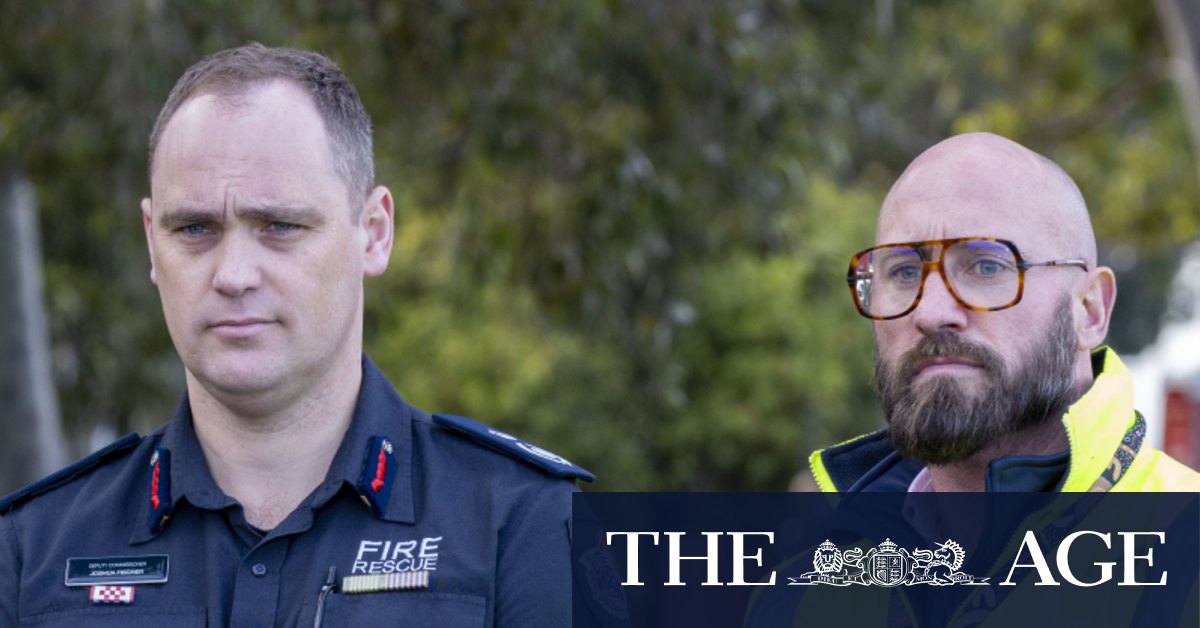Fischer said authorities were still probing how the fire started, but thought it was non-suspicious. Firefighters are expected to remain at the scene for days, possibly weeks, as they work to access the site of the explosion. Wastewater and concerns about the building’s integrity have prevented crews from venturing into the smouldering wreck, leaving firefighters to monitor hotspots from above using drones.
“Once we can get access to the site, we will have a clearer picture, particularly of the area of origin,” Fischer said.
Authorities are also checking the atmosphere for dangerous gases emanating from the site.
Steve Lansdell, the Environmental Protection Authority of Victoria’s western metropolitan region manager, reiterated western Melbourne residents should not touch potentially affected waterways, including Cherry and Laverton creeks. He said if significant contamination was found, it could take months to dissipate.
“We’re not getting readings out there, but we’ll continue to monitor that for days to come,” he told reporters.
Scrutiny of the management of the chemical warehouse razed on Wednesday is mounting after WorkSafe and the EPA revealed on Thursday they inspected it a combined 33 times and issued nine compliance notices since a deadly explosion last October, which killed 44-year-old father Reece Martin. EPA last inspected the site it in December last year.
On Friday, Lansdell said the ACB Group factory didn’t require an EPA licence for the chemicals it stored, and it was instead a dangerous goods site regulated by Worksafe.
“Our focus was issuing a couple of regulatory notices focused on stormwater management and stormwater containment,” he said, adding the second notice required information about waste stored on the site. “At that time, they’d complied and weren’t storing and accepting any waste that needed EPA permission.”
FRV Deputy Commissioner Josh Fischer and EPA West Metro Manager Steve Lansdell on Friday.Credit: Wayne Taylor
When asked if that second notice indicated the ACB Group was storing chemicals that it wasn’t supposed to, Lansdell said: “It’s too early to say … but that’s part of the ongoing investigation, and we’ll certainly be laser-focused on that.”
He added: “We haven’t seen any fish deaths or impacts on the bird life at the moment, which is great news, but … often it can take 24 or 48 hours of this firewater going downstream [before it] can start to have those impacts.”
Get alerts on significant breaking news as happens. Sign up for our Breaking News Alert.

